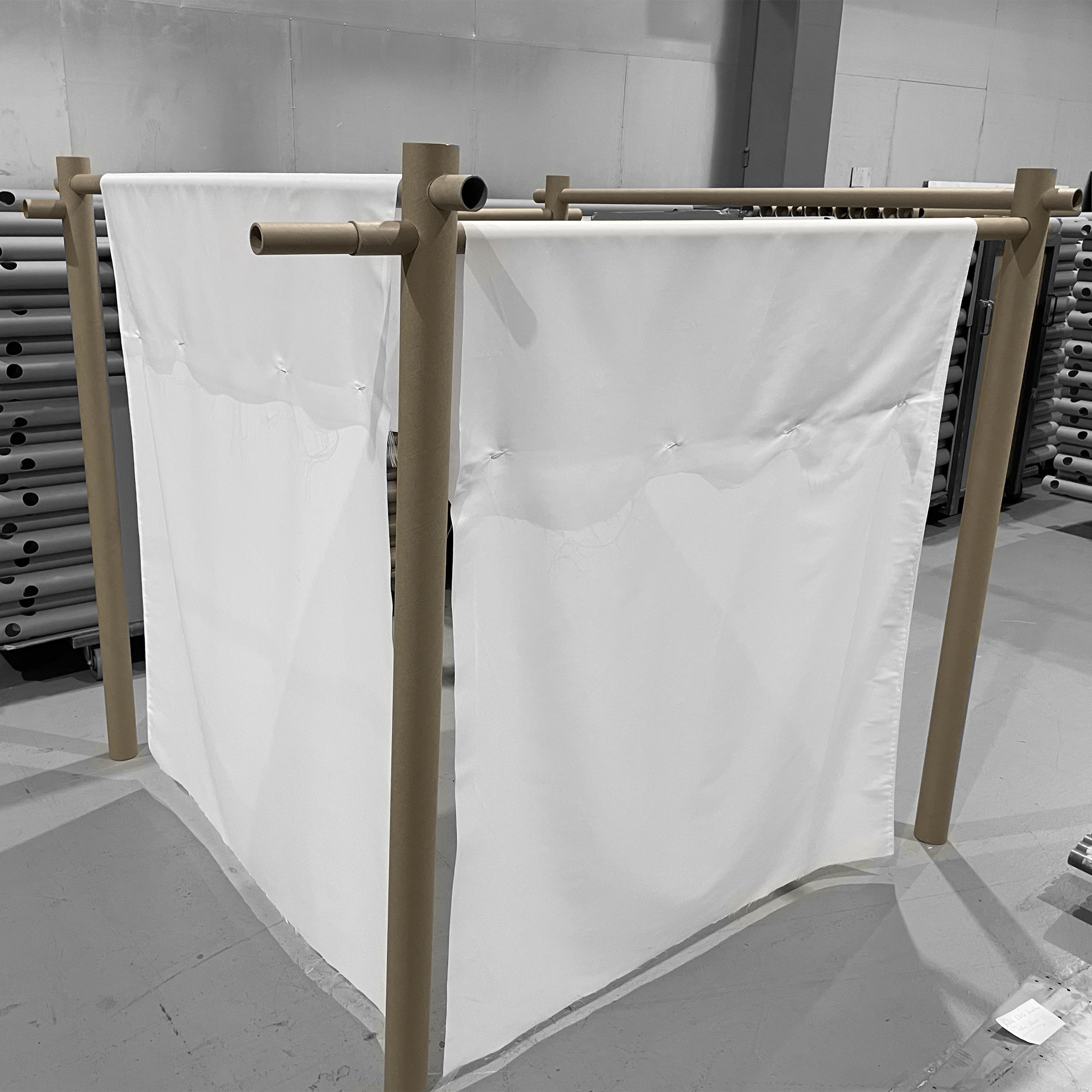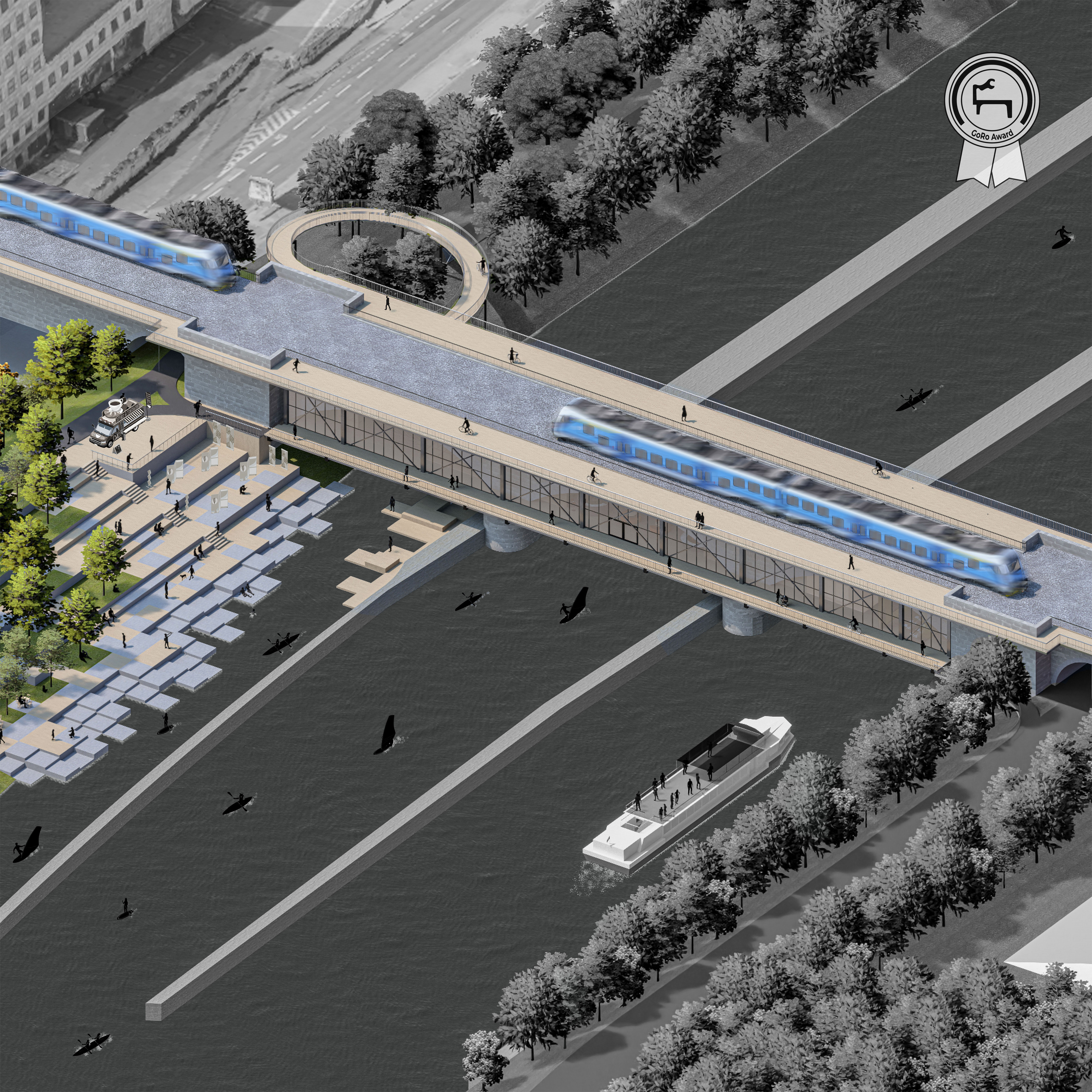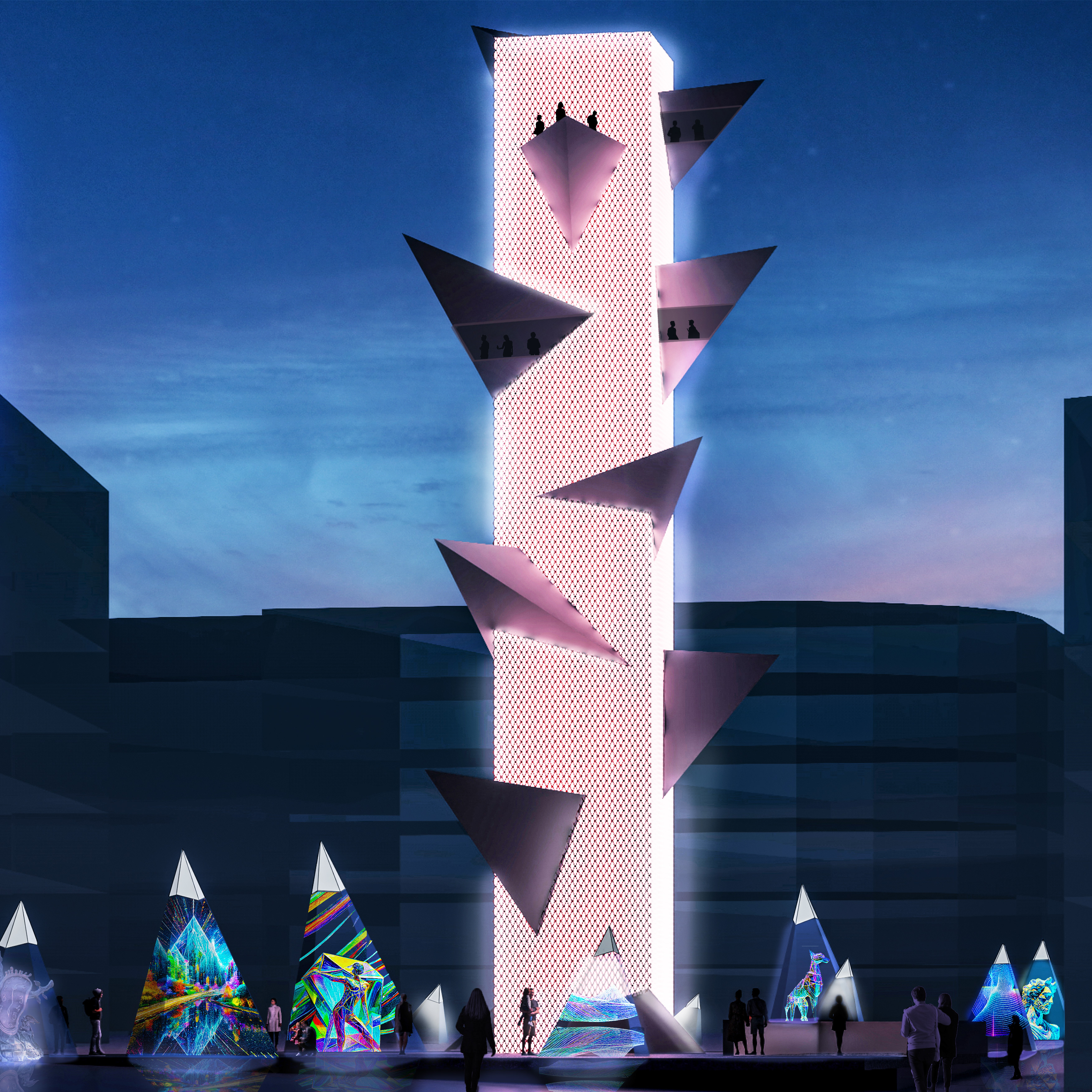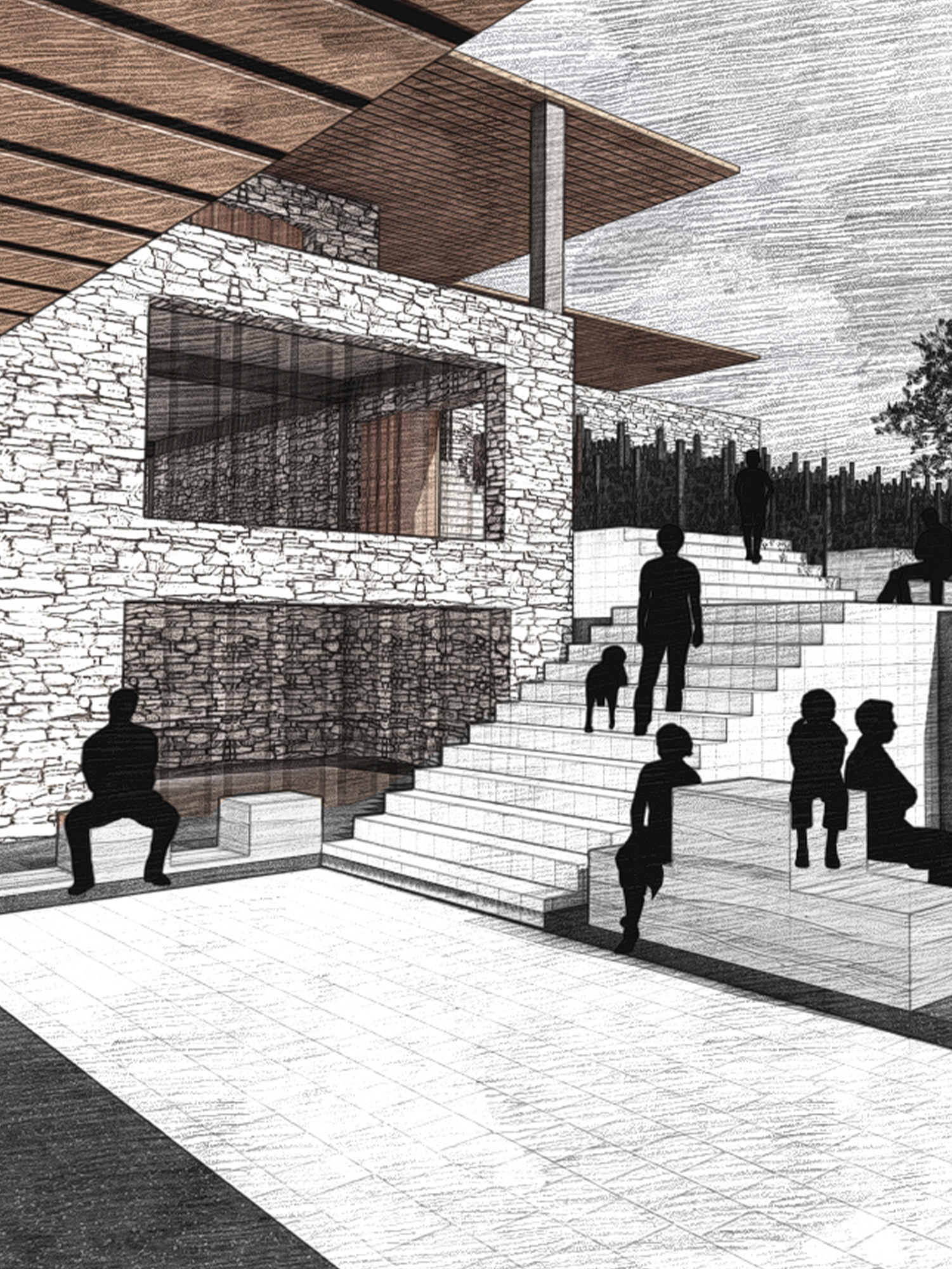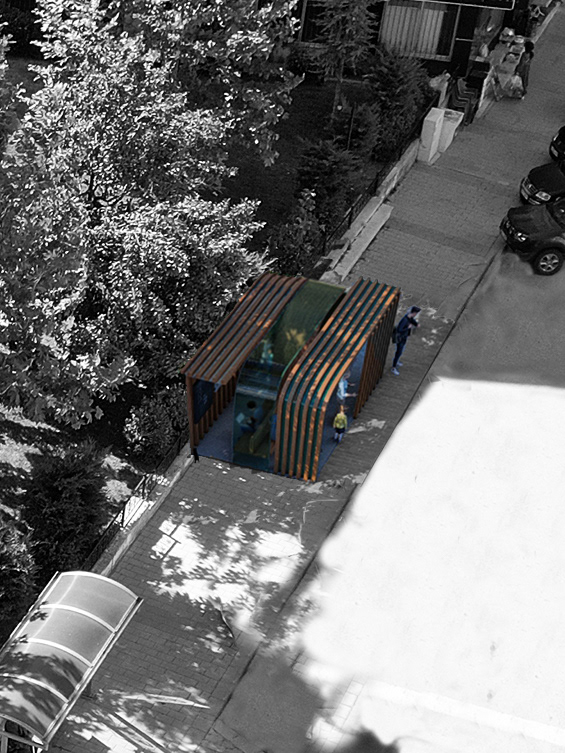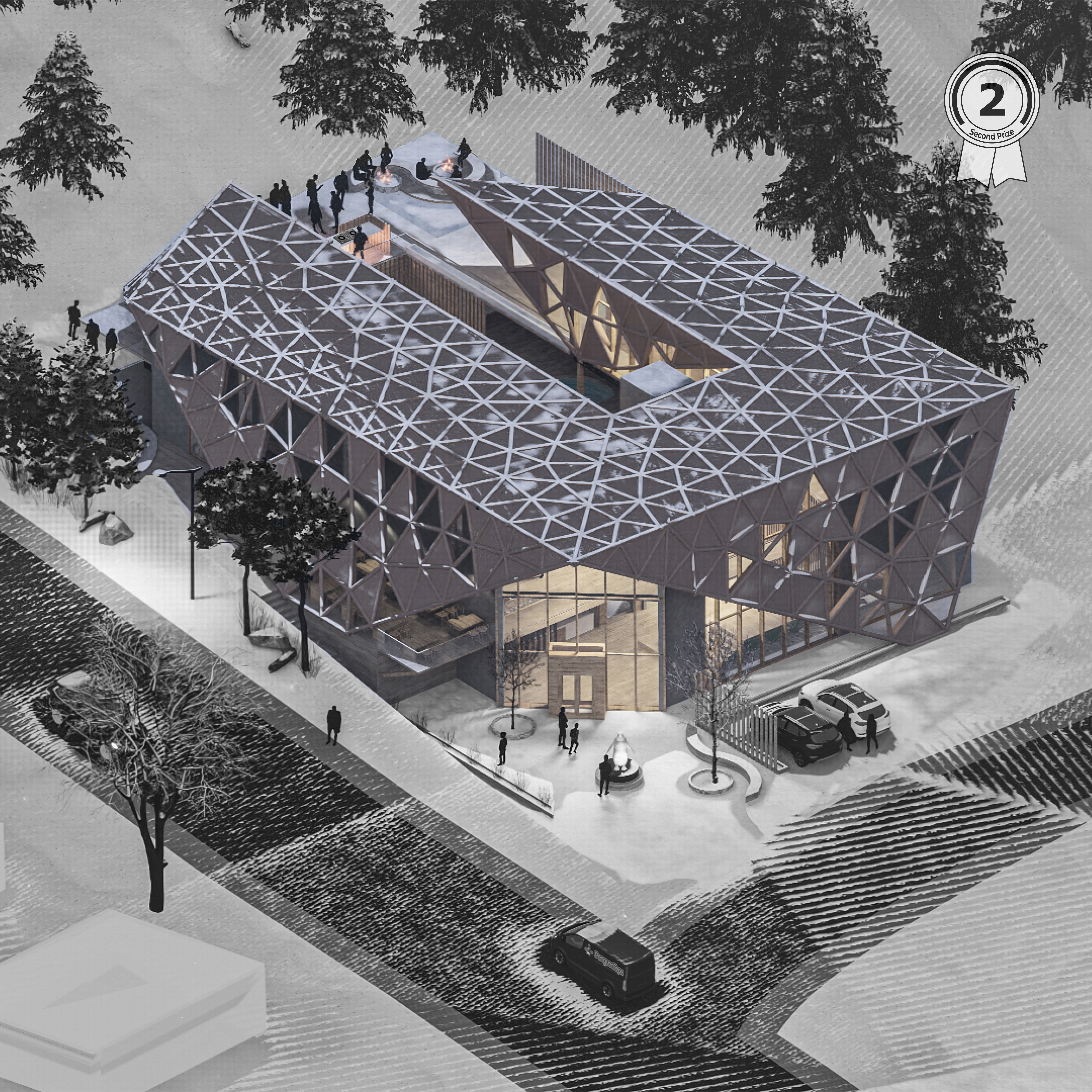The design process of the project begins by questioning the fundamental reason why a visitor would want to come here. Why would someone dream of such an off-grid vacation, distancing themselves so much from the crowd and technology?
The design, at its core, is centered around emotions, creating a space where these emotions are allowed to come to the forefront—something that can only be shaped through the visitor’s experience. The continuity of this experience, which begins with the journey to the island, is at the very heart of the design.
The Journey
The journey begins by boat and continues on the island with off-road vehicles. As visitors approach the lighthouse, they leave the vehicle and walk through a fragrance garden, harmonizing with the island’s nature, leading to the hotel. The sensory garden serves as a transitional space offering different sensory experiences—visual, olfactory, and tactile. As the visitor walks through the garden, which blends with the island’s natural vegetation, they are immersed in the scents of the plants. Throughout the walk, the lighthouse remains somewhat hidden. As one approaches the lighthouse, or the hotel, via an angled path, the elegant white structure emerges in a natural landscape with an endless sea backdrop, welcoming the visitor.
The journey begins by boat and continues on the island with off-road vehicles. As visitors approach the lighthouse, they leave the vehicle and walk through a fragrance garden, harmonizing with the island’s nature, leading to the hotel. The sensory garden serves as a transitional space offering different sensory experiences—visual, olfactory, and tactile. As the visitor walks through the garden, which blends with the island’s natural vegetation, they are immersed in the scents of the plants. Throughout the walk, the lighthouse remains somewhat hidden. As one approaches the lighthouse, or the hotel, via an angled path, the elegant white structure emerges in a natural landscape with an endless sea backdrop, welcoming the visitor.
Experience Above and Below Ground
The landscape continues towards the sea through vertical circulation, with various wooden platforms integrated into the steep terrain to harmonize with the topography. These platforms also play a key role in incorporating the inner layers of the topography, such as caves, into the overall experience, emphasizing the design’s holistic approach. Considering the spatial potential of these areas, it was discovered that the caves naturally align with practices like yoga and sound healing. With the continuity of vertical movement, visitors can reach the sea, where they can access platforms at sea level. These platforms, which can accommodate sailing boats, also allow visitors to participate in activities like diving in the sea caves clustered around the lighthouse, which include 6 main dive sites and 28 additional underwater caves. The integration of activities above and below ground is centered around maximizing the visitor’s experience.
The landscape continues towards the sea through vertical circulation, with various wooden platforms integrated into the steep terrain to harmonize with the topography. These platforms also play a key role in incorporating the inner layers of the topography, such as caves, into the overall experience, emphasizing the design’s holistic approach. Considering the spatial potential of these areas, it was discovered that the caves naturally align with practices like yoga and sound healing. With the continuity of vertical movement, visitors can reach the sea, where they can access platforms at sea level. These platforms, which can accommodate sailing boats, also allow visitors to participate in activities like diving in the sea caves clustered around the lighthouse, which include 6 main dive sites and 28 additional underwater caves. The integration of activities above and below ground is centered around maximizing the visitor’s experience.
Materiality & Sensory Contrast
In a design crafted through experience, interior decisions are shaped by the sensory experiences intended to be created. Sensory contrast refers to how the perception of a sensory stimulus is influenced by preceding or contrasting stimuli. This principle is fundamental to human perception and can be experienced across different senses. For instance, visual contrast involves differences in light, color, and patterns that make objects stand out more prominently—a bright object appears even brighter against a dark background. Similarly, tactile contrast is evident when touching a soft object after a rough one, which heightens the perception of texture. This project explores the use of contrasting materials and textures to enhance the overall sensory experience.
